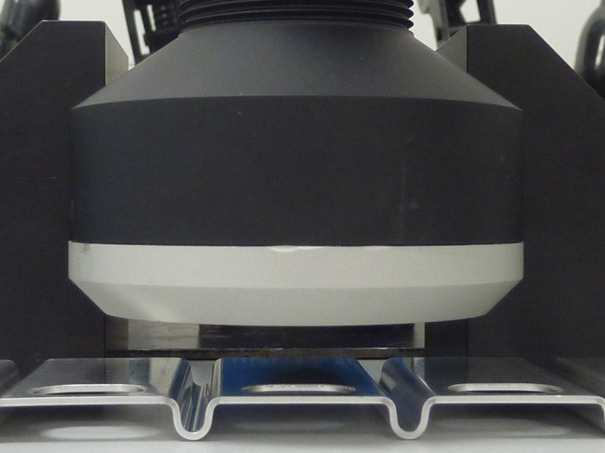What is oil layer thickness measurement?
What is inline oil thickness measurement?
Those wishing to measure the layer thickness e.g. of a homogeneous layer of printing ink on paper can adopt the grammage method as an adequate approach. The grammage of a printing ink is not all that different from that of paper with a thickness of between 0.05 mm and 0.2 mm. The use of accurate scales should be able to produce a reliable result. What happens when we replace printing ink with oil and paper with a 1 mm steel sheet? We would probably come to the limits of the grammage method.
We still need a reliable method of determining the thicknesses of oil layers without too much effort. One such method is the fluorescence method. UVA light is used to stimulate the fluorescence. Secondary emissions are emitted in the visible wavelength range. The intensity of the fluorescence establishes the measure for the thickness of the respective oil layer. We should take into consideration however that the signal strength (fluorescence) is not only dependent on the layer thickness but also the nature of the oil used and that the metal surface functions as a reflector and also exerts an influence on the signal level. There are also a number of oils with only a minimal or no fluorescence effect and for which this measurement of layer thickness is unsuitable.
Taking the mid-wavelength infrared light range (MIR) into consideration, we see that the oils previously investigated all exhibit a significant absorption in a certain wavelength range, whilst other wavelength ranges do not respond to the presence of oil. Were we to exclude this oil-sensitive wavelength window from the MIR spectrum and then to compare this absorption behavior in standardized fashion with the absorption observed in a second, oil-neural wavelength window, we would have a first approximation of a proportional relationship between the thickness of the oil layer and the standardized signal.
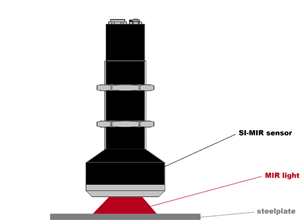 |
 |
The SPECTRO-M-10-MIR/(MIR1+MIR2) sensor is fitted with exactly this wavelength window. A schematic depiction and initially aimed at a steel surface (without oil layer). The absorption in both wavelength windows is comparable. This value can be used as a reference value: Mref = CH1/(CH0+CH1), CH0 and CH1 are the signals measured from both wavelength windows. Covering the steel surface with a homogeneous oil layer effects the following change in the MIR spectrum:
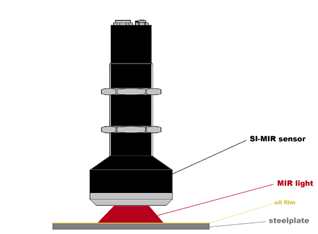 |
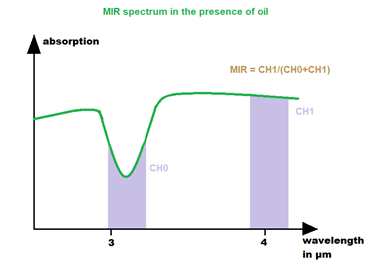 |
The left-hand measuring window CHO detects the extra absorption caused by the oil layer, whilst the right-hand measuring window remains largely unaffected by this:
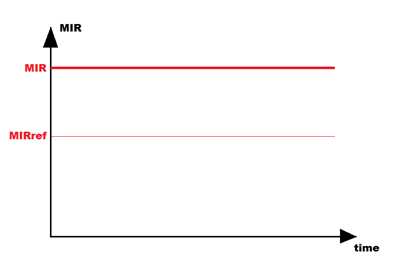 |
MIR=CH1/(CH0+CH1) moves upwards in the CH0 window through the additional absorption. The more intensive the absorption, i.e. the thicker e.g. the oil layer, the further removed is the MIR value from the reference value MIRref (without oil layer). |
| Investigations of the various oils have shown that the absorption is dependent on both the thickness of the oil layer and the oil type. The reflective metal background also influences the measuring result; this requires a calibration for oil type and background before measuring the actual oil thickness. To do so, droplets of the identical type and volume of oil are applied to a de-greased metal surface (each oil droplet usually contains 20µl) which are then spread homogeneously over a defined surface (e.g. with a 70 mm diameter). It is now possible to determine the layer thickness: an oil volume of 20µl across a diameter of 70mm produces a layer thickness of c. 5µm. Two droplets (40µl) correspond to 10µm, 3 droplets (60µl) to 15µm etc. Once samples with the various layer thickness have been prepared, you can start with the calibration procedure. To this end, the SPECTRO-M-10-MIR/(MIR1+MIR2) sensor is positioned on various samples in sequence, and the MIR value measurement for a certain layer thickness can start.. | 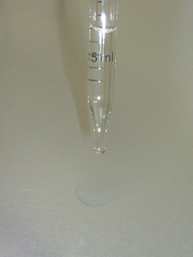 |
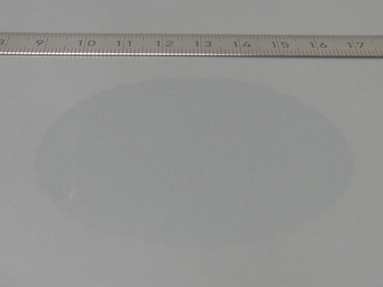 |
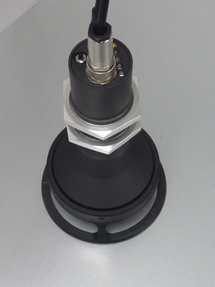 |
Upon completion of the process we have a table of values shown here as a diagram:
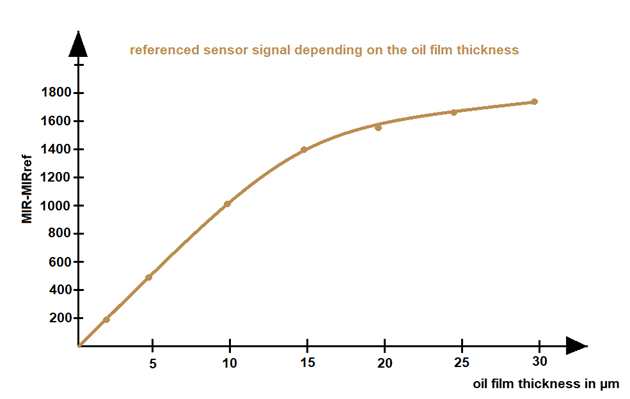 |
The diagram shows that the resolution of the measurement procedure lies at 10nm and the measuring accuracy moves in the range of c. 50nm.
To perform inline measurement, all you need to do is to remove the spacer, then you can start! The sensors are fitted with digital and analog outputs and in future can optionally also be fitted with a Feldbus. The system can be parametrized and monitored easily via the Windows® MIR Scope V1.0 software. The clearance from the sensor to the surface of the object amounts to type 10mm, the detection range has an approx. 10mm diameter. Fixture covers are used for small measurement objects which restrict the measurement range accordingly. As the measurement system usually works in DC mode, measurement cycles of up to 10 kHz can be achieved.
